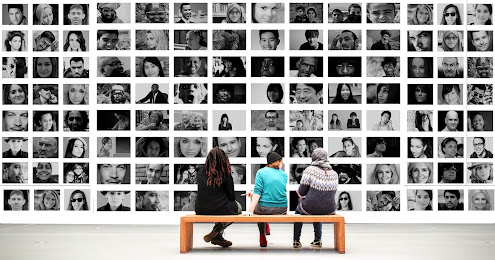Your attention, please!
Creative innovation is a great way to express an inspired thought, but often there’s more to creative work than self-expression. Frequently, inventive works aren’t only about showcasing an idea, but also connecting with others through it.
Creating for no other reason than because you’re moved to is wonderful. And, there’s truth to the sentiment that designing something with imposed limitations, like a fear of getting it wrong or making a mistake, can stymie innovation. After all, imagine what inventions, programs, music, paintings, and books wouldn’t have materialized if their creators hadn’t broken away from conventional ways of seeing and doing things and looked at them with new approaches? What would have happened if innovators hadn’t pushed past missteps on their way to realizing their concepts? Hadn’t pressed forward to creating something different; something unique? Pushing boundaries is essential for growth and unbound creativity is a big part of that.
But creative expression also is a means of communication and when intended as an exchange, the work needs to affect its audience. It might, for instance, stimulate what a person sees, hears, touches, tastes or smells, or rouse a combination of his senses. Or it could cause participants to feel something, learn a new concept or become motived into action.
An article by writer and entrepreneur Jeff Goins on why creative works need an audience, talks about how connecting with others is a fundamental aspect of the creative process. The better that that ideal is understood, Goins said, the more successful creators will be at bringing their expressions to life and affecting others with them. What’s more, Goins asked, who wants people to bypass their work? Rather, innovators of all kinds of work strive to make a difference to others through their creations.
Goins has a point. I may, after all, be moved to write a historical novel for teens, but writing it is only part of the book’s creative process. How the story connects with its readers—the messages, interpretations and take-aways that each reader comes away with for having read it—complete the circle of creating it. Sure, I can write at random without regard for the effect it might have on others, but when I’m creating something with an intended audience, how those people interpret my piece becomes a key part of the process.
The idea, as I see it, is to create without abandon while ultimately, connecting with your audience through your resulting work. I suppose that’s what first, second, third (however many it takes!) drafts are about, because it’s during the creative process that discoveries are made, ideas are honed, and truths are revealed. It’s how new ways of seeing things are realized and connections are made.
Karen Maserjian Shan is a communications professional, editor and writer with an expertise in connecting people and businesses through written communications in print and digital platforms.



Comments
Post a Comment